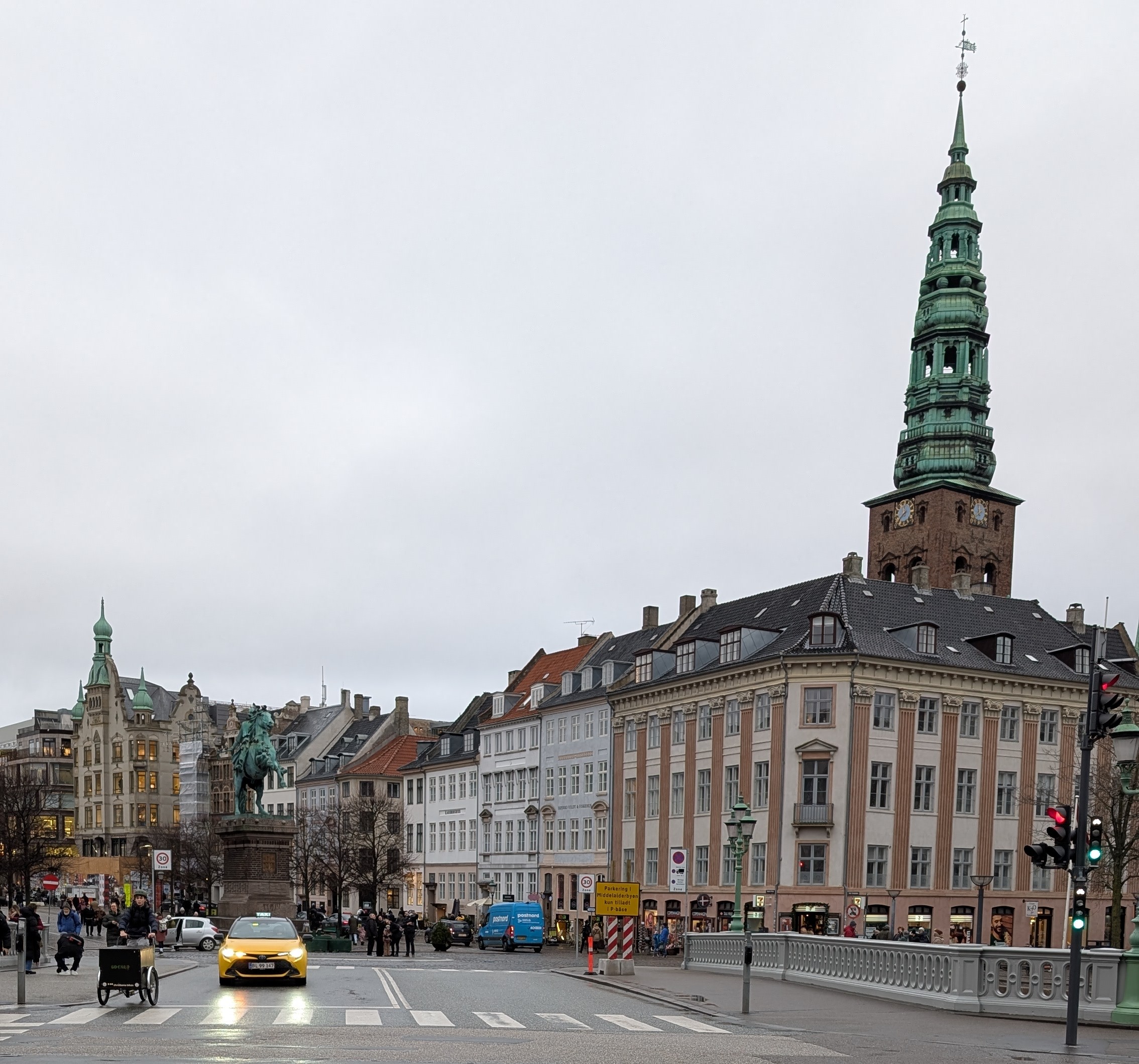Our trip to the Danish capital of Copenhagen in our big Northern European tour was about so much more than just Tivoli and strolling through the city. We also explored a bunch of museums and even visited a palace!
Christianborg Slot
Christiansborg Palace is still the heart of Denmark’s power. What makes it unique is that it houses all three branches of government—the royal, legislative, and judiciary—under one roof. The Palace contains the Parliament, the Prime Minister’s Office, the King’s Royal Chambers, and the Supreme Court. We walked to the Palace, crossing the marble bridge over the canal to the island of Slotsholmen.




We passed a large horse-riding area, framed by a row of trees, before reaching the palace gates. Following the signs to the entrance, we paid our 215 DKK entry fee (about A$50) for access to four museums. The entrance hall at Queen’s Gate was absolutely stunning, with towering pillars intricately carved into figures, supporting the weight of the entire building.
Royal Reception Rooms
After slipping on our protective blue shoe covers, we stepped into the King’s Stairwell. The grand staircase led us to a series of stunning rooms. Many of the rooms had minimal furniture, but they were still beautifully decorated. There were magnificent chandeliers and a massive dining table set for 50 people. In one room with no furniture, we couldn’t resist—giggling like kids, we slid around in our shoe covers until someone else walked in!




We stepped into the Great Hall to admire the tapestries, though I wasn’t particularly fond of them. They felt a bit too modern for the grand, historic setting.
Palace Ruins
It might seem a little strange, but the ruins of previous castles on the site have been preserved beneath the new palace. You can go beneath the castle and have a look. This was really cool. Even when the third castle was built between 1907 and 1928, they kept the foundations of both Absalon’s Castle and Copenhagen Castle. The access to the basement was right next to the Queen’s Gate entrance.
The display of the ruins has been re-themed to focus on witchcraft and the persecution of witches. While the ruins themselves don’t have many artefacts of particular interest (aside from a couple of wells), they’ve added a full-on witch theme to enhance the experience.
Unfortunately, the Royal Kitchens were closed during our visit, even though we had tickets for them.
War Museum
We visited the Krigsmuseet, located on the same island as the Palace. Tickets cost 105 DKK (around A$25). After stowing our coats in the free lockers, we explored the ground floor. This featured an impressive collection of artillery and a small drone exhibit. One standout was the first-ever drone/cruise missile, a Doodlebug V1 that, luckily, had never exploded!




The highlight of the ground floor was a realistic mock-up of an Afghanistan forward post, complete with gravel and dust. We got a firsthand look at the impact of Danish troops’ involvement in Afghanistan, with destroyed vehicles from IED attacks on display, along with weapons and equipment they used in the field. It was a powerful and eye-opening exhibit.




Up on the first floor, we found a more traditional museum display. The exhibits were organized by era and year, allowing us to trace the gradual evolution of uniforms, weapons, and equipment. There were suits of armor, swords, captured Nazi uniforms, Soviet gear, and even simulations of historical battles.
Bianca had a blast dressing me up in a sailor’s outfit from the 1700s, and we both enjoyed checking out the models of ships. I also convinced Bianca to climb onto the Leopard tank parked outside—because why not? It was much easier to get up than get down though!







